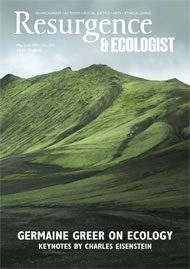The Righteous Republic describes the search of five of the most influential figures in the independence movement for the end India should be aiming for, namely a purpose which goes beyond nationalism. All five, Mahatma Gandhi, Rabindranath Tagore, the artist Abanindranath Tagore, Jawaharlal Nehru and Bhimrao Ambedkar looked to the past for the India of the future they hoped for, the Righteous Republic. Their search, Ananya says, “took the form of an attempt to recover a line of moral enquiry from a welter of Indian traditions.”
Returning to these stalwarts is particularly appropriate at a time when India seems to have lost its way. Obsessed by its besetting sin of corruption, which has corroded its institutions, there is widespread despair about the future. Such is the disgust with politicians that a man as mild-mannered as Gopal Gandhi, the grandson of Mahatma Gandhi and former civil servant, diplomat, and Governor of West Bengal, recently described them as “ugly” and their practices as “revolting”.
Tackling the immediate and obvious task of ending colonial rule, wasn’t enough for the five leading thinkers of the independence movement. They believed the India of the future should stand for moral values as well. Ananya argues that they believed those values should be based on Indian traditions because of “the residual normative appeal of Indian traditions to the people of India” .
Ananya suggests it was this appeal which led Bhimrao Ambedkar to convert to Buddhism. With his loathing of the caste system which oppressed his Dalit community it might be thought that he would be opposed to Indian tradition, but he still felt it necessary to anchor his vision in an Indian tradition. Ananya says Ambedkar chose Buddhism, albeit a modified version of that religion, because its concept of dukkha or ‘suffering’ meant for him that the search for human happiness was not the pursuit of individual interests but the relief of suffering in society.
Ananya points out that Nehru searched for India’s “old strength” in his classic The Discovery of India. He found the tradition of a moral ruler in the emperor Ashoka, and so chose the Ashokan Lions and the Buddhist wheel of law as symbols of the India he hoped would be built after independence. When she comes to Gandhi, Ananya discovers the roots of his swaraj and ahimsa, usually translated as ‘self-rule’ and ‘non-violence’, in India’s past. In ahimsa she finds values and practices common to the Indic religions, practices such as karuna (compassion,empathy) and anrasamsya (non-cruelty).
The lifelong meditation of Rabindranath Tagore on a poem by the 5th century Sanskrit poet Kalidasa was, according to Ananya, “an important means by which to establish some relationship with ancient India, with the past as such, with the future, and with the very nature of the human experience of history.” Tagore’s search for India’s self led him to reject nationalism, and the simplistic idea that all India needed was to be a free nation. Ananya sees the famous painting Mother India by Abanindranath Tagore as a reminder of his uncle Rabindranath’s insistence that the emphasis should be on reforming society rather than changing the government.
Righteous Republic is a scholarly book. It’s not always an easy read, and it is certainly not a book to be taken lightly. Ananya delves deep into India’s past to explain the ideas of these five thinkers who had such a profound impact on the independence movement. I have only been able to describe a few of those ideas and I hope that my descriptions are not simplistic. There is however a simple point to be made about her book. These five thinkers were not content with the Western concept of a nation-state. They didn’t want to see India aspiring to be another America, a great power, a nation like any other nation. They felt India had a vocation and that vocation was to be itself. Today India seems to see material prosperity as a sufficient ambition.
Providing reasonable prosperity for all Indians is of course essential, but maybe India would have come closer to achieving what is now called an inclusive economy if it had realised, as Rabindranath Tagore did, that what happens to society is more important than government. A society in which the values and practices common to all Indic religions were honoured would be a society that struggled first and foremost to eradicate the inequalities which still shame India.
Sadly, the secularists find no place for religion, and the religious see no place for anything outside their own tradition. So the global consumerist culture is free to sweep across India, a culture which cares about the individual rather than society. It’s also a culture which, in spite of all the disappointments of the 67 years since independence, leads Indians to believe that government can bring about all necessary changes when they should also look inwards to see the reforms that need to take place in society’s values and practices.







